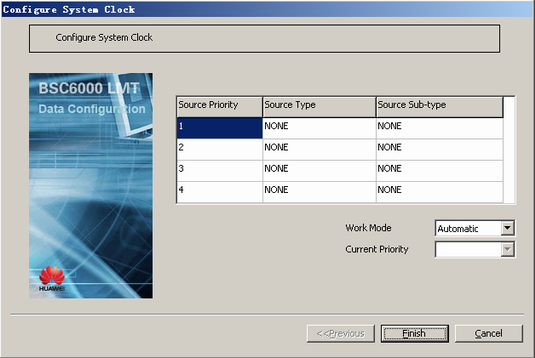This describes how to configure the system clock, that is, the input clock for the GGCU. The input clock for the GGCU can be the 2 MHz or 2 Mbit/s external clock or the line clock extracted from the MSC through the A interface board. The GGCU processes the input clock and generates the 8 kHz clock, which is used as the transmission synchronization clock and the time synchronization clock for the boards in the GMPS or GEPS.
| Scenario | BSC initial configuration and BSC capacity expansion |
| Mandatory/Optional | Mandatory |
- The BITS clock is of two types: 2 MHz and 2 Mbit/s.
- The system clock has four priorities: priority 1 to priority 4, from the highest to the lowest.
- When the BITS clock is provided, it should be configured as the system clock and be set the highest priority
Prerequisites
- The GGCU in the GMPS is configured. For details, see Configuring the GGCU.
- The BITS clock is ready, or the line clock for the GMPS is configured.
Preparation
Parameter |
Example |
Source |
|---|---|---|
Priority |
1 |
BSC internal planning |
2 |
BSC internal planning |
|
3 |
BSC internal planning |
|
Source Type |
2M external clock 0 |
BSC internal planning |
LINE0 |
BSC internal planning |
|
LINE1 |
BSC internal planning |
|
Source Sub-type |
2M_Hz |
BSC internal planning |
8K_Hz |
BSC internal planning |
|
8K_Hz |
BSC internal planning |
